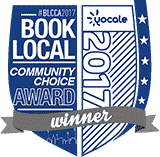Tools of the TCM Practitioner
Acupuncture is undoubtedly the most common tool used by TCM practitioners. It is best explained as the insertion of hair-thin needles in specific locations on the body; these locations are commonly referred to as acupuncture points. Acupuncture has the unique ability to regulate bodily systems which are out of balance (i.e. disease). For example, if your immune system is too low, the correct acupuncture treatment will strengthen it; if your blood pressure is too high, acupuncture can reduce it. Simply put, acupuncture gives the body a “physiological nudge” in the right direction.
Chinese herbal medicine has a long and extensive history, dating back before the emergence of acupuncture. The Materia Medica (the Chinese herbal medicine “bible”, if you will) is filled with information about thousands of roots, plants, flowers, barks, minerals and animal products, each possessing unique medicinal properties. Chinese herbal medicine is considered by most traditionalists to be the most important and useful tool of the TCM practitioner.
Tuina (twee-na) is TCM massage. Tuina is most appropriate for issues like musculo-skeletal pain but can also be used for issues like digestive and menstrual issues with great success.
Cupping or fire cupping uses round, glass cups placed on the body. The term “fire” is used because a small, controlled flame is quickly inserted into the glass, burning off the oxygen in the cups; this creates a mini vacuum in the cup which, after placed onto the skin (usually the back), gently pulls the skin and muscle tissue into the cup. This process effectively reduces chronic muscle aches and pains.
Moxibustion is the burning of a Chinese herb called Mugwort on or around acupuncture points. Moxibustion, or moxa, is generally used when an individual experiences “cold” pain such as knee pain that worsens in cold weather.
Other TCM modalities include gua sha (mild skin scraping technique), diet therapy and exercise recommendations.
What to Expect During your First Visit
Your first visit with a TCM practitioner should be at least an hour and could go an hour and a half in length. A complete health history is taken during this time, including recent illnesses, medications and your family history.
When you see a TCM practitioner, you will also be asked a number of important questions which will help your TCM practitioner decide which acupuncture points to use and which herbs to prescribe. Finally, your practitioner will take your pulse (at the wrist) and inspect your tongue. These methods are crucial diagnostic tools: TCM theory includes 28 different types of pulses, each indicating a certain imbalance within the body. The size, shape, coating and surface of the tongue are characteristics which further help us narrow down a diagnosis. Take a look at your tongue the next time you get the flu; the changes are drastic!
Follow-up visits can last from 45min to an hour depending on the condition being treated. Typically, six to ten treatments are required in order to promote change in your condition. Sometimes fewer treatments are required if the health concern has been around for a short time (weeks), and more treatments are necessary if the issue has persisted for months or years.
Training of a TCM Practitioner in Ontario
To address the ongoing issue of regulatory inconsistencies and uncertainties, the province of Ontario has responded by passing Bill 50 in December 2006 and forming a regulatory college for Acupuncture and TCM for Ontario. That being said, many people still practice acupuncture with very little training and it is – at least for now – up to the public to determine if their acupuncturist is qualified enough to provide them with the care they need. Your best bet is to go to someone with specific TCM training (at least four years) from a recognized TCM college to receive the best possible treatment results.
Much More than Pain Management
The scientific community agrees that acupuncture is helpful with pain management. Much research has been published on the benefits of TCM and acupuncture in medical journals all over the world. However, the general public is only recently becoming aware of all the other common conditions for which acupuncture treats successfully.
Chronic digestive problems, gynaecological concerns (fertility, menopause etc.) and emotional issues are all very common complaints in the clinic of a TCM practitioner and can be treated very successfully.
Give it a Try!
TCM and acupuncture have been around for thousands of years and are currently being used by over a quarter of the world’s population. In Ontario, it is increasingly evident that this form of healthcare continues to be an important and permanent part of many healthy individuals’ primary medical care. Contact your local TCM Practitioner today and enjoy the safe and natural path to optimal health.
To receive help from a qualified and caring TCM practitioner, book with Drew at his convenient Toronto location on the Danforth.


